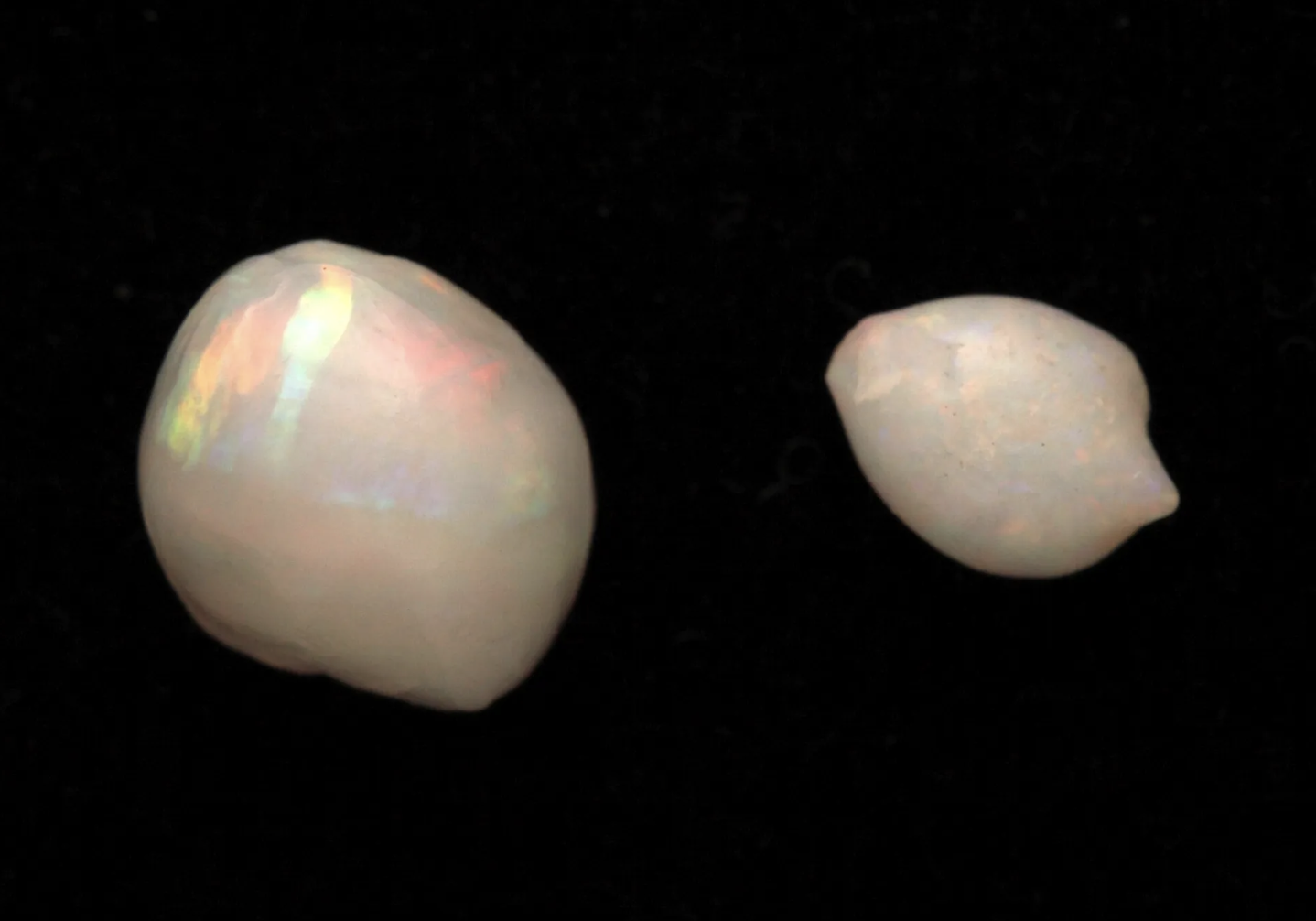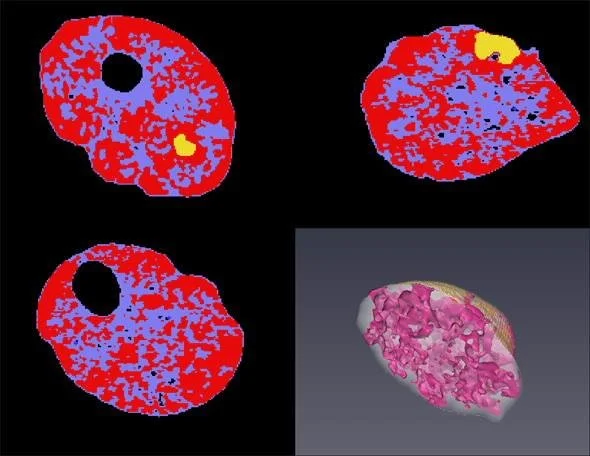A pearl in the rough
The Discovery of the World's First Opalized Pearls
Author : McKenna Mulvany
Published : April 2023
It’s rare enough to find a single precious gemstone, much less two in one. However, that is exactly what happened in 2006, when the world’s first opalised pearls were unearthed at Twelve Mile Opal Field near Coober Pedy.
The opalised pearls were dug up by miners Dale Price and Tanja Burk, who, three years earlier, had been involved in the discovery of the world famous “Virgin Rainbow”, an opalised belemnite fossil. Price and Burk were at 12 Mile to dig for opalised shells using their UV blacklight set up, consisting of a ‘Noodling’ machine, or a giant rotating drum, which sends mounds of dirt through a conveyer belt in a blacklist shipping container. The UV blacklight causes even the smallest chips of precious opal to fluoresce, which is how the opalised pearls first caught Price and Burk’s eye.
The miners, who were collecting smaller pieces of precious opal to sell to overseas buyers, plucked the duo of four millimetre in diametre pearls off of the conveyor belt. Almost immediately, they could tell from their rounded shape that they had happened upon something special, and the opalised pearls were locked away in Price and Burk’s private collection. While the miners were fairly certain about the specimen’s identity, they had difficulty getting the pearls authenticated. Since one had never been seen before, it was completely unknown if such a phenomena could even exist.
Word of the pears spread throughout the mining community. However, they remained out of the public eye until 2015, when the South Australian Museum was finalising preparations for their “Opals” exhibition. Museum scientists were extremely interested in displaying the pearls, but firstly wanted to be totally sure of their origin. Thus, the specimens were sent away for testing at a facility at the Australian Nuclear Science and Technology Organisation in Sydney.
The opalised pearls underwent a 3D neutron tomographic scan, or internal x-ray imaging. During a tomographic scan, a narrow x-ray beam rotates around an object, rapidly sending images of its internal structure to a computer. Once enough images have been collected, they can be “stacked” together to form a 3D model of the object’s interior. The 3D scan determined that the specimen’s interior structure was consistent with the concentric one of a natural pearl. However, the structure was composed of silica rather than the usual calcium carbonate of a natural pearl, proving that the specimens were opalised pearl fossils, and that they were at least sixty-five million years old.
Price, Burk, and the scientists at the South Australian Museum were thrilled. Said Dr. Ben Grguric, an Earth scientist at the museum, “fossilised pearls were rare, but opalised pearls were completely unheard of.” In late 2015, the opalised pearls were put on special display in the “Opals” exhibition, where they were seen for the first and only time by thousands of visitors. Immediately following the exhibition, the pearls were returned to Price and Burk for safekeeping, with the intention to safeguard the “priceless” specimens for the generations to come.
The discovery and incredible story of the opalised pearls is an exciting introduction into a world of possibilities concerning what other types of opalised fossils that we are yet to find. Hundreds of millions of years worth of secrets lie beneath the surface of the Earth. What do you think we’ll discover next?
References:
9News. (2016, February 6). SA miners discover ‘priceless’ 65 million year old opalised pearls.
ANSTO Staff. (2016, February 8). Non-invasive three-dimensional reconstruction of ancient opalised pearls reveals structure
Fedokowytsch, T. (2016, February 6). Opalised pearls dating back 65 million years unearthed by miners sifting Coober Pedy spoil heap.
National Institute of Biomedical Imaging and Bioengineering. (2022, June). Computed Tomography (CT).
Opals Down Under. Opalised Pearls Discovered!
Peddie, C. (2016, February 5). The world’s first opalised pearls are on show at SA museum.
Starr, M. (2016, February 8). The world’s only opalised pearls, 65 million years in the making.


